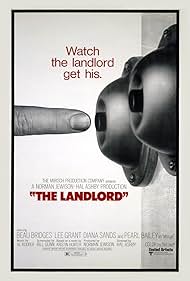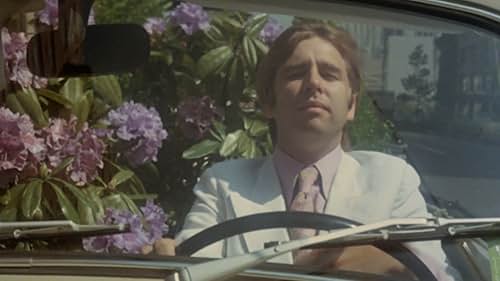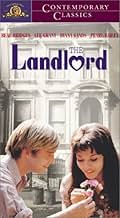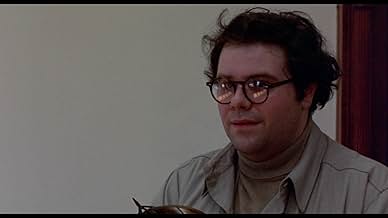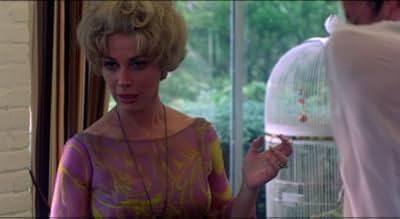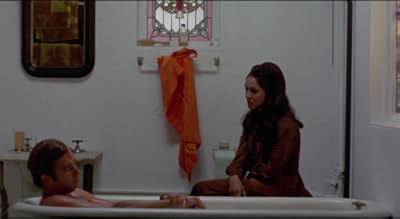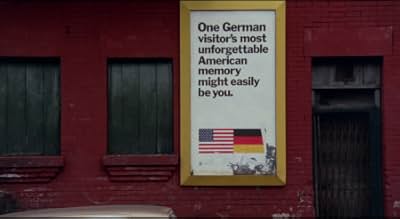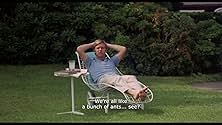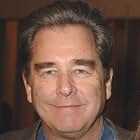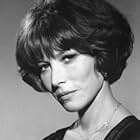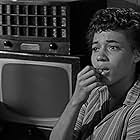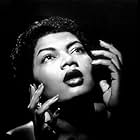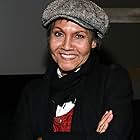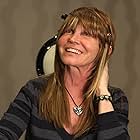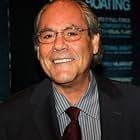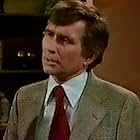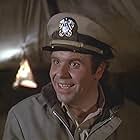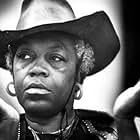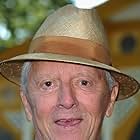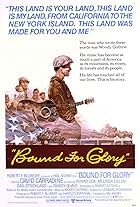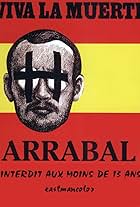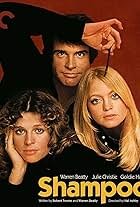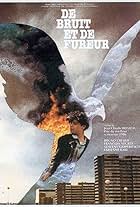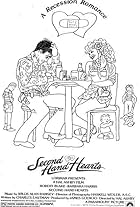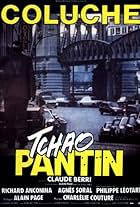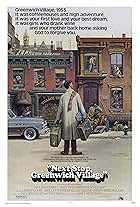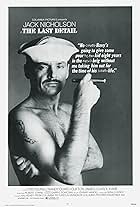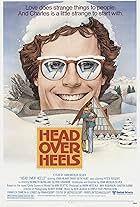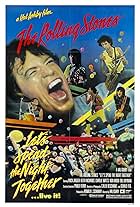CALIFICACIÓN DE IMDb
6.9/10
3.2 k
TU CALIFICACIÓN
Un joven adinerado que abandona la finca de su familia en Long Island para buscar el amor en un barrio de Brooklyn.Un joven adinerado que abandona la finca de su familia en Long Island para buscar el amor en un barrio de Brooklyn.Un joven adinerado que abandona la finca de su familia en Long Island para buscar el amor en un barrio de Brooklyn.
- Dirección
- Guionistas
- Elenco
- Nominado a 1 premio Óscar
- 5 nominaciones en total
Louis Gossett Jr.
- Copee
- (as Lou Gossett)
Mel Stewart
- Professor Duboise
- (as Melvin Stewart)
Robert Klein
- Peter
- (as Bob Klein)
Doug Grant
- Walter Gee
- (as Douglas Grant)
- Dirección
- Guionistas
- Todo el elenco y el equipo
- Producción, taquilla y más en IMDbPro
Argumento
¿Sabías que…?
- TriviaThe opening shot is of director Hal Ashby's actual (and short-lived) marriage to actress Joan Marshall. He is flanked by the film's star, Beau Bridges (his best man) on the left and producer Norman Jewison on the right.
- Citas
Elgar Winthrop Julius Enders: [being held at gunpoint by Marge] I am the new landlord. And you are disregarding your lease by practicing whatever you're practicing here with these, with these readings. I'll have you thrown out! So if you want to shoot, just go ahead and shoot. That'll be running an illegal business, nonpayment of rent... and manslaughter.
- ConexionesFeatured in Ein Fall für Stein: Recherchen im Rottwald (1976)
Opinión destacada
Movies that deal with race have often been awkward things. One of the biggest problems is they tend to be horribly patronising in tone, many of them looking essentially at how white people can help black people. Most of them were of course written by someone white, which while it doesn't necessarily make it ill-informed, it doesn't tend to help either. The Landlord is one of the few from this era that is based on source material by a black writer (novelist Kristin Hunter). Hunter's novel was adapted by Bill Gunn, who is also black. Of all the pictures I have seen dealing with race in America, it is by far the most confrontational, and really the only of this period that really challenges white social supremacy as well as overt racism.
The late 60s and early 70s was really the age of the odd-looking movie, especially with all the new, young directors that were cropping up. The Landlord was the debut of Hal Ashby, a former editor who had recently won an Oscar for his very fine job on another race-related movie, In the Heat of the Night. Ashby has a somewhat blunt approach, and like most young directors seems to be trying to make his mark with lots of unusual but ultimately pointless camera angles and extremely obvious symbolism. One thing that is very striking is how the scenes at the Enders family home are very white and the scenes at the flat block are very black. This is not done so much with set and costume design, but with lighting, strip-light brightness for the former and gloomy half-light for the latter. In fact the movie might as well be in monochrome for all the actual colour tone there is in it. The black/white metaphor of this is a little heavy-handed but at least it also serves the purpose of highlighting the stark difference in quality of life. What is probably best about Ashby's method here is the distance he puts between camera and subject, often putting a bit of scenery in between us and the action, making us feel like snooping witnesses. He will then suddenly take us by surprise with a close-up as a character delivers some key line of dialogue.
In line with Mr Ashby having been an editor, The Landlord is very much an editor's movie. This was also the age of weird editing pattern, and there is a lot of cutting back-and-forth, mixing various scenes together. Sometimes this is rather effective (for example the powerful montage of schoolchildren towards the end, or the sight-gag inserts of what Lee Grant is imagining when she finds out she will have a black grandchild), but mostly it is just a little distracting, and because it is so mechanical it threatens to alienate the audience from the material. However, shining through the rather ostentatious style are some very fine acting performances (especially from Bridges, Grant and Diana Sands), notable for their realism in spite of the occasionally bizarre situations they are in. And what's more, in amongst this choppy editing is a story which is at turns comical, thought-provoking and gently poignant, which alongside its hard-hitting stance ultimately carries a message of hope and humanity.
The late 60s and early 70s was really the age of the odd-looking movie, especially with all the new, young directors that were cropping up. The Landlord was the debut of Hal Ashby, a former editor who had recently won an Oscar for his very fine job on another race-related movie, In the Heat of the Night. Ashby has a somewhat blunt approach, and like most young directors seems to be trying to make his mark with lots of unusual but ultimately pointless camera angles and extremely obvious symbolism. One thing that is very striking is how the scenes at the Enders family home are very white and the scenes at the flat block are very black. This is not done so much with set and costume design, but with lighting, strip-light brightness for the former and gloomy half-light for the latter. In fact the movie might as well be in monochrome for all the actual colour tone there is in it. The black/white metaphor of this is a little heavy-handed but at least it also serves the purpose of highlighting the stark difference in quality of life. What is probably best about Ashby's method here is the distance he puts between camera and subject, often putting a bit of scenery in between us and the action, making us feel like snooping witnesses. He will then suddenly take us by surprise with a close-up as a character delivers some key line of dialogue.
In line with Mr Ashby having been an editor, The Landlord is very much an editor's movie. This was also the age of weird editing pattern, and there is a lot of cutting back-and-forth, mixing various scenes together. Sometimes this is rather effective (for example the powerful montage of schoolchildren towards the end, or the sight-gag inserts of what Lee Grant is imagining when she finds out she will have a black grandchild), but mostly it is just a little distracting, and because it is so mechanical it threatens to alienate the audience from the material. However, shining through the rather ostentatious style are some very fine acting performances (especially from Bridges, Grant and Diana Sands), notable for their realism in spite of the occasionally bizarre situations they are in. And what's more, in amongst this choppy editing is a story which is at turns comical, thought-provoking and gently poignant, which alongside its hard-hitting stance ultimately carries a message of hope and humanity.
- Steffi_P
- 14 ene 2011
- Enlace permanente
Selecciones populares
Inicia sesión para calificar y agrega a la lista de videos para obtener recomendaciones personalizadas
- How long is The Landlord?Con tecnología de Alexa
Detalles
- Fecha de lanzamiento
- País de origen
- Idioma
- También se conoce como
- Der Hausbesitzer
- Locaciones de filmación
- Productoras
- Ver más créditos de la compañía en IMDbPro
Taquilla
- Presupuesto
- USD 1,950,000 (estimado)
Contribuir a esta página
Sugiere una edición o agrega el contenido que falta

Principales brechas de datos
By what name was The Landlord (1970) officially released in India in English?
Responda